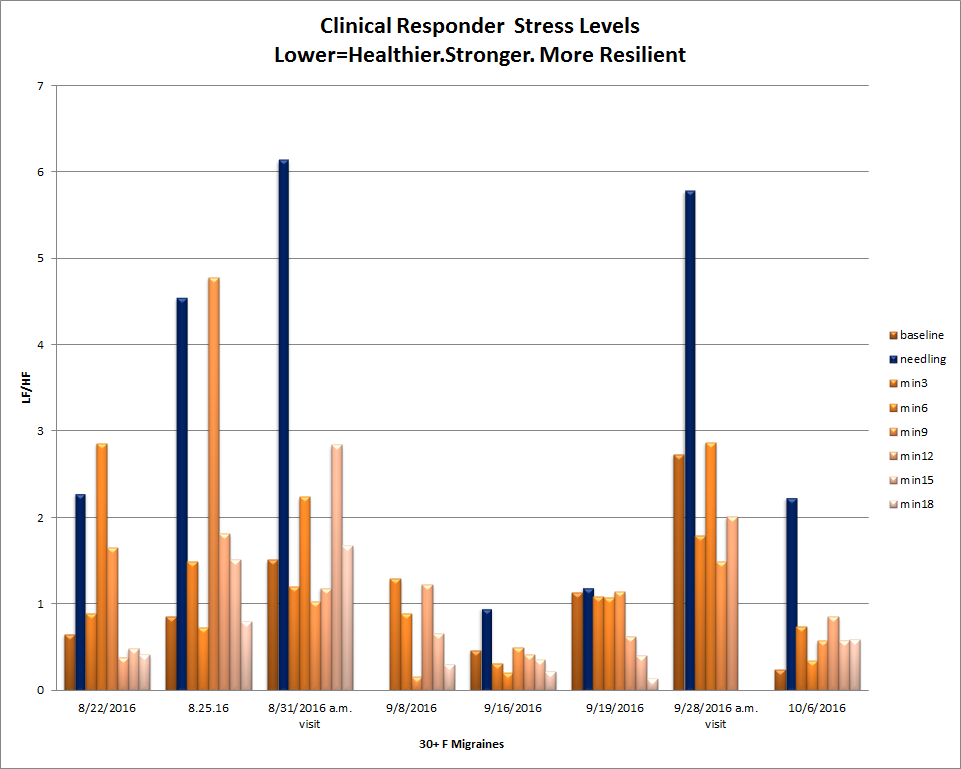Considerations in HRV monitoring, time of day, illness
Kristen Sparrow • October 07, 2016


Looking at recent “ugly” data (data that doesn’t verify my various hypotheses), I realized it would illustrate a point. That is that there are lots of factors in measuring HRV. That is why you need to collect fairly large amounts of data to recognize trends. Lots of thing influence it. Whether the person worked out before hand, if they took Sudafed, if they are ill. The following data show two pitfalls in HRV data collection.
Case1. 30+ year old female who’s had remarkable resolution of migraines within a few visits. But when you look at her data there are two treatments where she looks quite stressed. Rather than blame it on the treatment, it turns out it was the time of day. The morning treatments show higher stress levels. Treatments on 8.31.16 and 9.28.16 are in the a.m.
Case 2. A 50+ year old with hypertension and anxiety who has responded beautifully to treatment. On her last visit, however, she was ill with a fairly severe upper respiratory infection. Blood Pressure remained low, 123/80. But look how her HRV shows how high her stress levels have gone. This is exactly as predicted with HRV. It deteriorates with illness, old age and stress.

[/fusion_builder_column]
[/fusion_builder_row]
[/fusion_builder_container]


